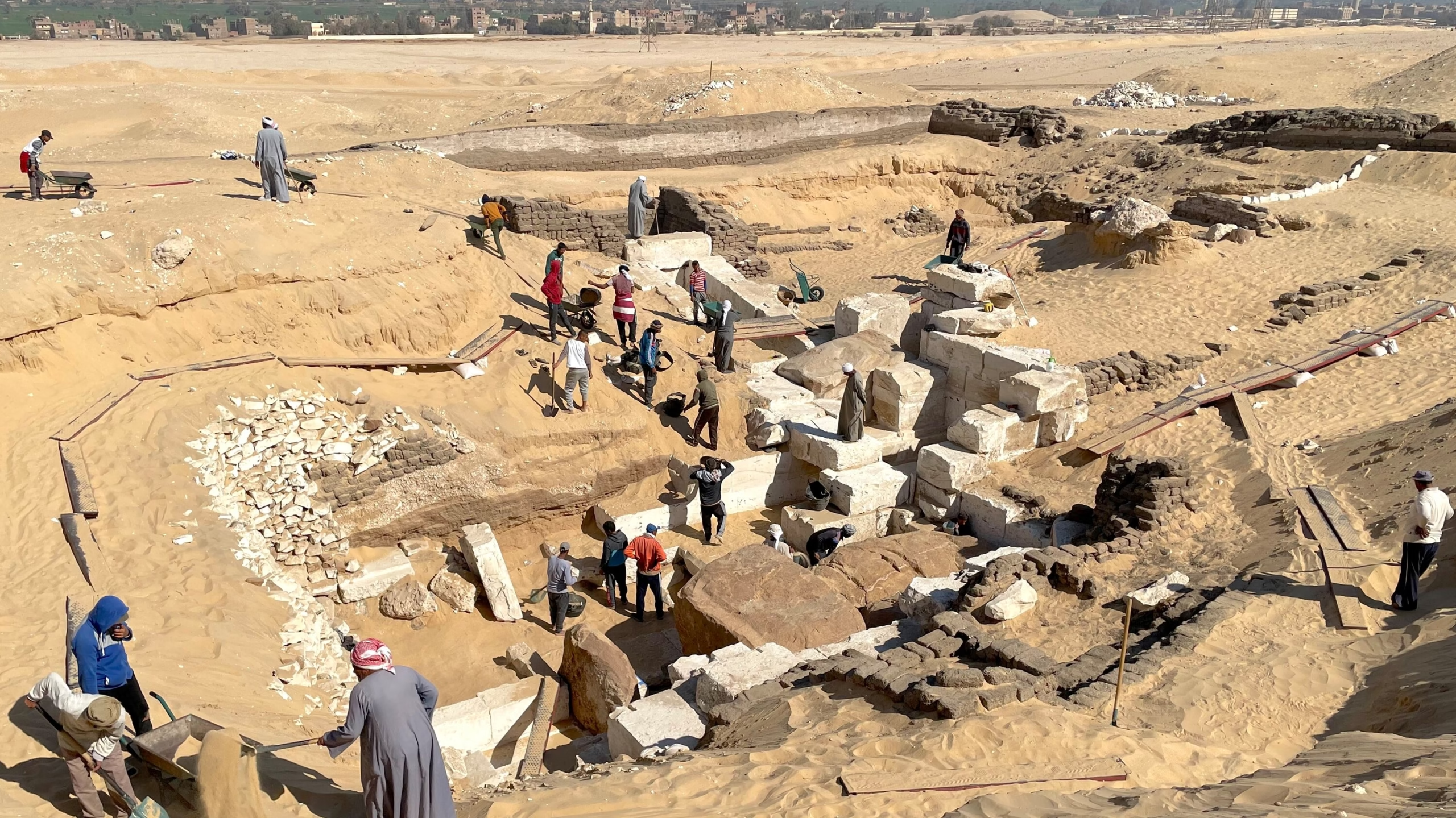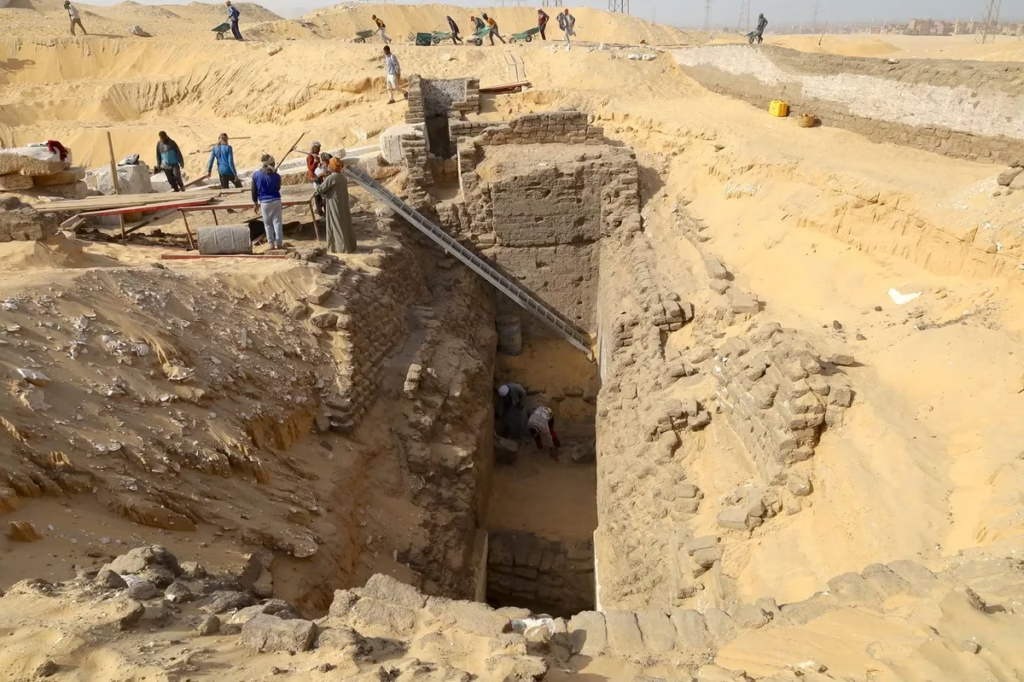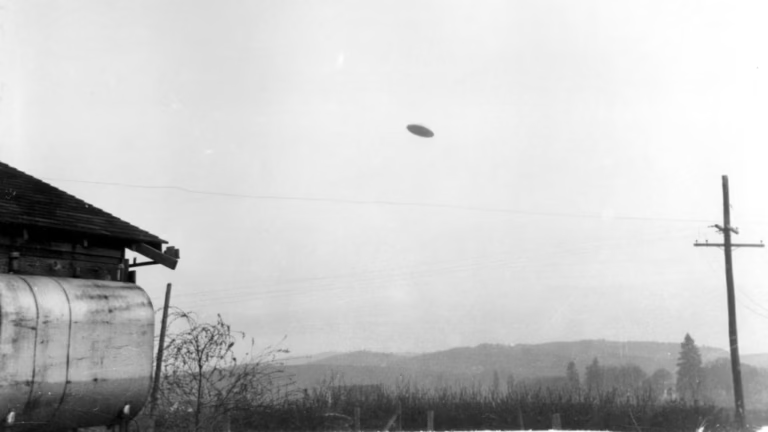Archaeologists Uncover Tomb of Unknown Egyptian King!

A stunning new archaeological discovery in Egypt is rewriting what we know about one of the most mysterious periods of ancient Egyptian history. In January 2024, researchers uncovered a large, elaborately decorated limestone tomb in Abydos, Egypt. But here’s the twist they don’t know who the tomb belongs to.Although this burial site likely held a king who ruled over 3,600 years ago, the tomb’s text was vandalized by ancient grave robbers, erasing the name and identity of the ruler forever or at least for now.

A Forgotten Dynasty Reemerges
The newly discovered tomb dates back to the Second Intermediate Period (1640–1540 BC), a time when Egypt was divided and ruled by competing kingdoms. Ancient Archaeologists believe the tomb belonged to a ruler from the Abydos Dynasty, a little-known line of kings who ruled Upper Egypt during this turbulent era.
“This is a really mysterious dynasty,” said Josef Wegner, the University of Pennsylvania Egyptologist leading the excavation. “It was almost completely forgotten from ancient records, probably because it ruled during a period of political collapse and confusion.”The tomb’s size and location suggest it belonged to a powerful and wealthy ruler, possibly one who came before King Seneb-Kay, the only named pharaoh confirmed from the dynasty so far.

An Underground Royal Resting Place
The tomb was discovered almost 23 feet underground, buried beneath Anubis Mountain, a pyramid-shaped hill in Abydos considered sacred by the ancient Egyptians. This “mountain” concealed the necropolis (a city of the dead), where generations of pharaohs were laid to rest.Abydos itself was once believed to be the burial place of Osiris, the god of the underworld, making it one of the most important spiritual centers in ancient Egypt.
The newly uncovered tomb includes multiple rooms, a beautifully painted entryway, and wall decorations featuring Isis and Nephthys, two goddesses often shown mourning the dead in funerary art. However, no human remains were found inside the tomb, making it harder to confirm exactly who was buried there.

Could It Be a Lost King?
Experts are trying to figure out which forgotten ruler this tomb might have belonged to. Based on its style and structure, it could belong to either King Senaiib or King Paentjeni, two names from fragmentary historical records tied to Abydos. But as Wegner notes, “It could just as easily be an entirely unknown king.”
The tomb is the largest ever found from this mysterious dynasty, showing that whoever was buried there was a major figure. Its location in an older part of the necropolis also suggests that this ruler lived before King Seneb-Kay, making him one of the dynasty’s earliest leaders.
Clues in the Sand: What’s Next?
The team has only just scratched the surface. Over the coming months, Wegner and his colleagues plan to excavate over 100,000 square feet of desert surrounding the tomb using advanced technology like ground-penetrating radar and magnetometry to detect buried structures.“There could easily be 12 to 15 kings buried in this area,” Wegner said. Each new discovery could fill in the gaps in Egypt’s royal timeline.
According to Salima Ikram, a professor of Egyptology at the American University in Cairo, this find is thrilling: “It helps us understand royal tomb architecture, confirms this was a significant cemetery, and gives us new insight into a dynasty we still know very little about.”

Why These Kings Were Erased from History
So why don’t we know more about these kings? The answer lies in how ancient Egyptians recorded history. Later rulers, who reunified Egypt, liked to present a clean, linear timeline that made them look like strong and rightful leaders. Smaller dynasties like the one in Abydos were often left off official king lists because they didn’t fit that neat narrative.“These kings were ignored, not because they didn’t matter, but because their existence complicated the story later pharaohs wanted to tell,” said Laurel Bestock, an Egyptologist at Brown University.
A Tomb of Questions, and a Future Full of Answers
Although we don’t yet know the name of the king buried in this impressive tomb, the discovery alone offers a powerful reminder of how much is still buried beneath the sands of Egypt.“With archaeology, you never know what you’re going to find,” Wegner said. “Sometimes the tombs speak louder than the texts.”
As more of the ancient necropolis is explored, researchers hope that one day, the identity of this forgotten pharaoh and perhaps others will finally come to light, helping to piece together a chapter of Egyptian history that time almost erased.






